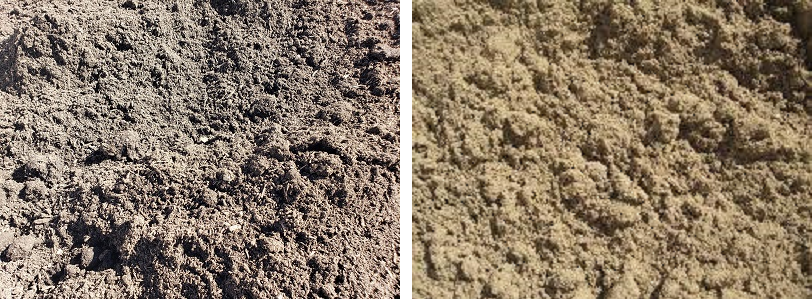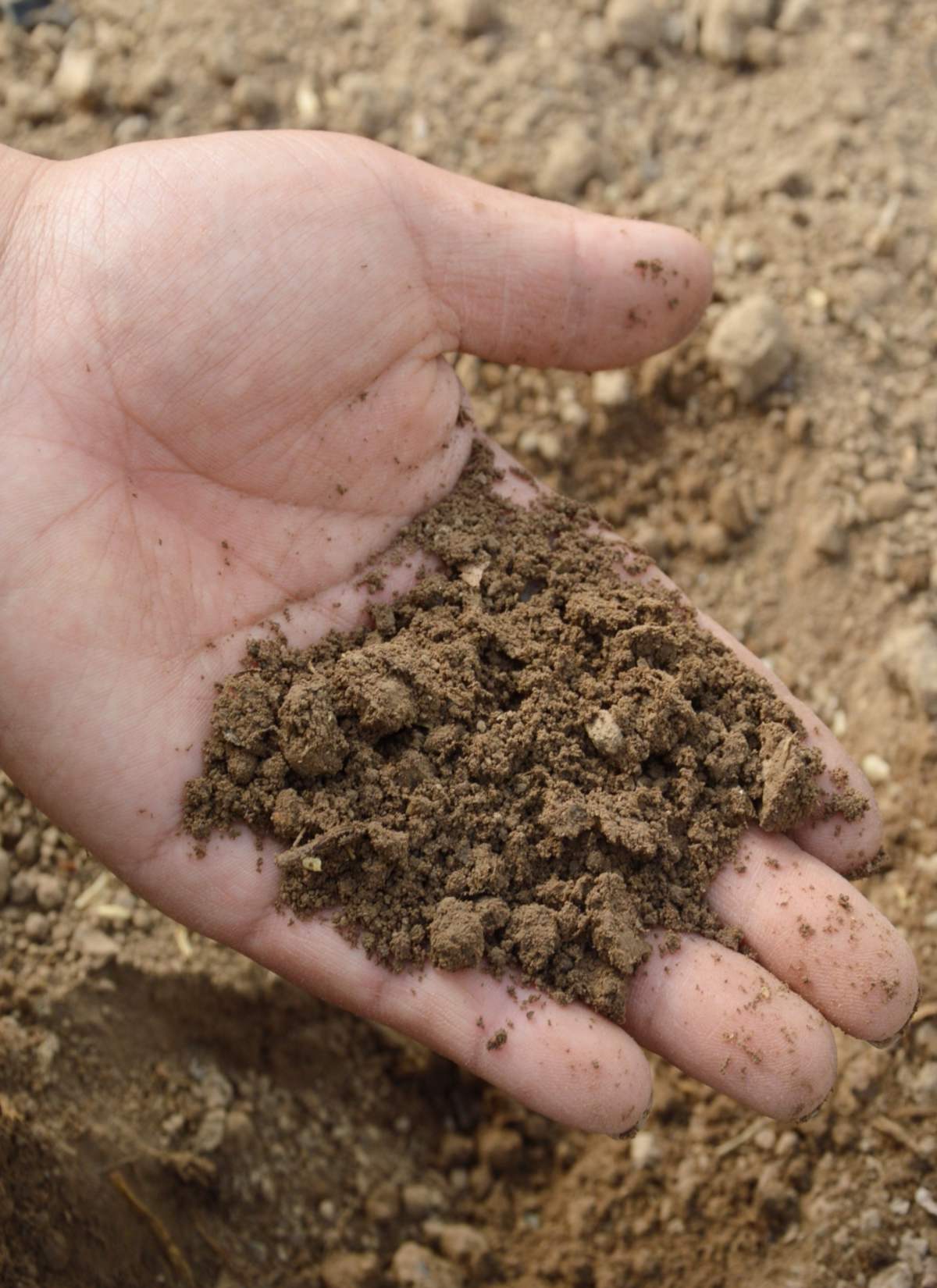If you wish to develop a garden or even grow turf in some sandy places, covering the sand with soil will increase the plants’ chances of surviving.
To improve the growing medium on which plants or lawn grass must grow, soil can be added on top of sand. Applying healthy soil on top of sandy soil at a thickness of 2 to 4 inches can give grass and plants enough depth to thrive and obtain nutrients without having to deal with the drainage concerns that come with sandy soil.
In order for the plants to benefit and thrive, this article will explain how to apply soil over sand in both garden and lawn applications.
Table of Contents
Things to Know When Placing Soil on Top of Sand
To make heavy clay soil usable, it can be necessary to combine it with other types of soil. Whether it’s cow, horse, or chicken excrement, it works.
The first two inches of sand should ideally be mixed with the soil when adding soil on top of sand to prevent the formation of a “barrier” between the two substrates. This is because when adding soil on top of sand, you should work the soil at least two inches into the sand.
When roots travel deeper into the ground in search of nourishment, it helps for them to transfer more easily.
Having saying that, don’t disregard the sand below. Sandy soil does contain nutrients that allow plants to thrive. The drainage system and its capacity to retain water are the only issues.
Apart from that, sand makes an excellent growing medium, and some plants, like the cactus, do particularly well in sandy soils.
Does Sand Need to be Removed before Putting Soil Down?
To make sure that the area is at your desired level, sand may need to be removed before nutrient-rich soil is applied.
On the other hand, adding a layer of topsoil will heighten the area if you are content with the sandy soil level now there.
Sandy soils are frequently loose and have a tendency to sink when weight is applied or when walking on them.
To prevent a significant height reduction when topsoil is added, you might compact the sand before adding dirt on top of it.
This is due to the topsoil’s inherent weight, which will compact and sink the sand beneath it, resulting in a general decrease.
Before adding soil, the sand should be smoothed to avoid creating an area that seems uneven and detracts from the appearance of your lawn as a whole. When growing vegetable plants, you might not give aesthetics much thought in gardening areas.
Can You Plant Over Sand?
Plants can grow well in sandy soils, therefore you can plant over sand.
In simply sand, I’ve seen vegetables like ochre and eggplant thrive, and they occasionally bear fruit without any care. absurd but true
However, plants with well-developed systems for storing water for use when it is not present in the soil, such as cacti, prefer sandy soil and do well in it.
We do advise choosing organically enriched soil of higher grade.
You must adjust the sandy surface to allow grass to grow since they require more moisture to develop rapidly. A minimum of 2 inches of topsoil is strongly advised.
If you’re wondering how much dirt over sand is required to grow grass, it should be at least 4 to 6 inches, but more is preferred.
How Much Topsoil Over Sand To Grow Grass?
The sort of grass you wish to cultivate will determine how much topsoil is required per square foot. While a lawn only needs around 2 inches of topsoil, certain varieties of turfgrass need anywhere from 2 to 4 inches.
The amount of soil that should be poured on top of the sand will allow the roots of the plants or grass to spread out and access nutrients while also receiving the necessary moisture.
Water is necessary for nutrients to pass from the soil to the plant. With sandy soil, it can be challenging for water to act as a transport medium for the nutrients.
Because grass roots grow more shallowly than those of larger plants, the top soil layer might be as thin as 2 inches if you intend to plant grass.
Larger plants, on the other hand, will need a deeper layer of soil to get nutrients, particularly as the roots begin to bury themselves in the ground.
Consider adding composted manure or topsoil to your yard’s soil before planting flowers or vegetables to boost its nutrient content.
Can You Lay Lawn Turf On Top Of Sand
The answer is that turf can be placed on top of sand. Making sure that the soil is neither too damp nor too dry is essential. The roots will decay if it’s too moist, and the grass won’t grow correctly if it’s too dry. The ideal soil moisture range is between 50 and 60 percent.
How to Lay Turf on Sandy Soil
The most typical method of installing turf is to put it out first, then fill in the edges with sand.
If you want to cover a flat area, this strategy works nicely. Before installing the turf, you might need to remove part of the sand from the area if it is not flat.
9 Tips when Laying Turf on Sandy Soil
- Start with a level sand foundation. To remove all of the loose sand, use a shovel or tiller.
- When the sod is level, place it over the sand base and firmly press it in place.
- Any voids should be filled with more sand.
- With a rake, level the sod’s top.
- Spread evenly over the top of the sod a mixture of topsoil.
- Start rolling out the turf from one side after determining its measurements.
- Include all of the targeted area.
- To fill in any gaps, carefully pull the lawn in.
- Water sparingly.
Benefits of Topdressing a Lawn
Applying a mixture of several ingredients over a lawn’s surface is referred to as topdressing. Although this gardening technique has several advantages, it is perhaps best recognized for creating gorgeous lawns.
Applying a top dressing to your lawn is the ideal method of fertilization. This entails covering the surface of your grass with an organic material layer (like compost) before sowing seeds or seedlings.
It will give the grass nutrients and enhance soil structure for better water drainage.
It will lessen flow from rain or snowmelt, which will assist avoid erosion. Additionally, it aids in the retention of soil moisture, fostering strong root development.
One of the most crucial procedures in keeping a lush, green lawn is topdressing.
When to Apply Topdressing to a Lawn?
During the spring and summer, use top dressings. Because they are cooler and dryer than the fall and winter, these times of year are perfect for growing grass.
If you are utilizing fertilizer products that contain nitrogen, phosphate, potassium, and sulfur, top dressing should be applied every 3 to 5 years.
It is advised to apply top dressing once a year if the product you are using simply contains nitrogen, phosphate, and potassium.
In addition, you might need to use top dressing when:
- whenever you plant new grass seedlings.
- to re-fill a lawn sink when the soil has gotten compacted or shrunk
- following lawn mowing or pruning.
- prior to converting a bare patch into a grass.
- in order to keep the grass that is already there healthy.
Tips for Topdressing Your Lawn
Cutting the existing grass to the soil’s surface is the finest approach to topdress your lawn. Here, the grass is mowed so short that the dirt below is visible.
Use a mulcher and rake the grass. This will enable you to trim grass clippings into tiny pieces, which you can then mix with the topdressing to add volume. The grass clippings will swiftly degrade and replenish the soil’s nutrients.
Decide whether spots will need more topdressing or dirt to level them out with the rest of the lawn.
Start layering the grass and fill to a thickness of 2′′ using compost, mature manure, or any other nutrient-rich soil of preference.
Even if the grass doesn’t have the two inches of thickness applied evenly, as long as it is covered, it is acceptable.
Types Of Lawn Top Dressing
Composted manure is the most popular kind of top dressing for lawns.
Iron, copper, zinc, manganese, boron, molybdenum, chlorine, and sodium are all present in composted manure along with nitrogen, phosphorus, potassium, calcium, magnesium, and sulfur.
It also contains very little amounts of nitrogen, oxygen, hydrogen, and carbon. This fertilizer works well because it gives plants the nutrients they need, but sometimes can’t get from the soil alone.
Compost
Food leftovers can be recycled into nutrient-rich soil using the compost bin. It requires little upkeep and is simple to set up. You have a lot of commercial possibilities if you don’t want to handle it yourself.
Topsoil
Organic material, nutrients, and microbes that help the soil retain moisture are all found in the topsoil layer. Additionally, it offers a home to worms and other creatures that transform plant matter into humus, enhancing the soil’s fertility.
Topsoil gets its dark colour from these features, which will undoubtedly encourage strong plant growth.
FAQ
Does adding sand to soil help drainage?
One of the cheapest ingredients you can use to help break up the soil in your garden is sand. Sand’s small particle size will enable it to break up soil clods, improve drainage, and aerate the soil for healthy root growth.
How much sand should I put in my vegetable garden?
Sand and potting soil are combined. Work coarse sand into the top 1 to 2 inches of soil after a substantial layer of nutrient-rich soil has been laid down. In order to provide the plants more minerals and nutrients to grow and produce plump veggies on thick, strong vines, organic material should have been buried 3 to 4 inches deeper.
What happens when you add sand to soil?
It pulls the tightly packed clay particles apart, which improves drainage and makes it simpler for plant roots to pierce the soil. It settles in the deep pore spaces of sand and functions as a sponge to slow drainage, keeping the soil moist for a longer period of time.
How much sand should I add to my soil?
Before filling the rest of the bed, combine 1 part topsoil, 1 part organic matter, and 1 part sand, and mix 2 or 3 inches of the mixture into the current soil to improve drainage.
Should I add sand to my vegetable garden?
If the soil in your garden has a lot of clay, you should add some sand. Use the right kind of sand, add it in a 1:1 ratio, and make sure the mixture has enough organic matter. A concrete-like mixture is produced when sand is improperly added to clay soil, making it unfit for plant growth.


